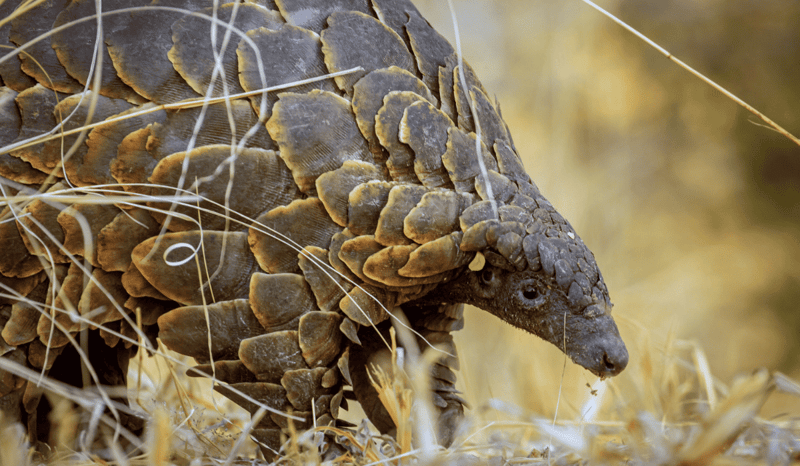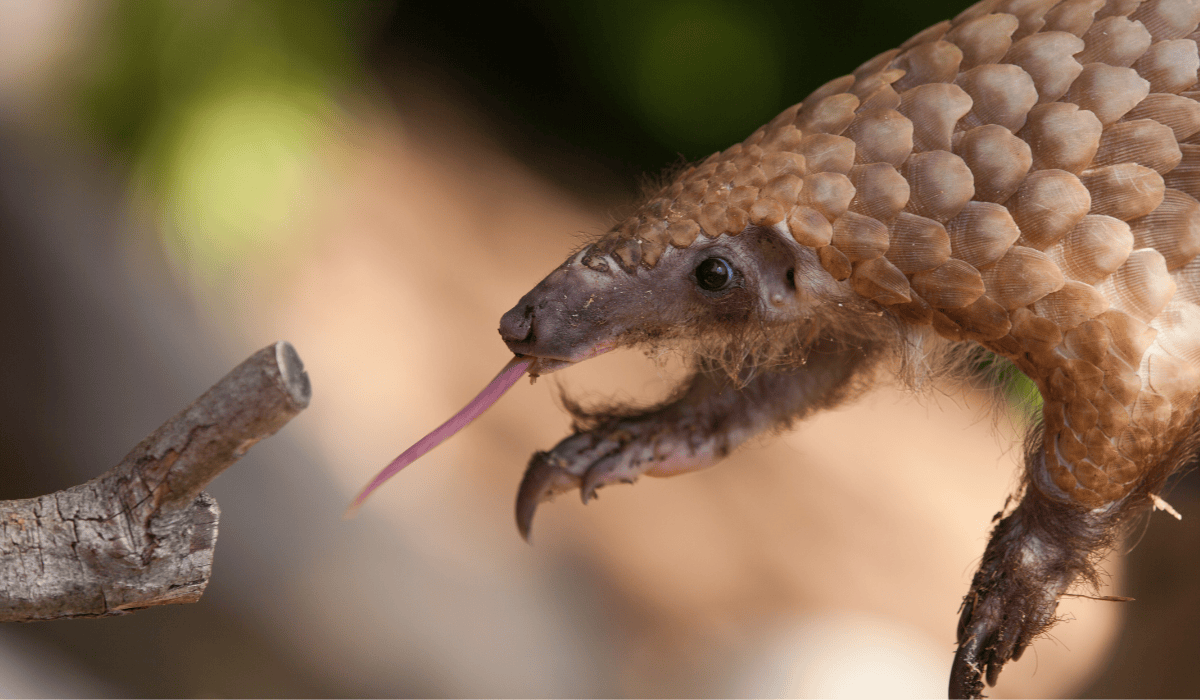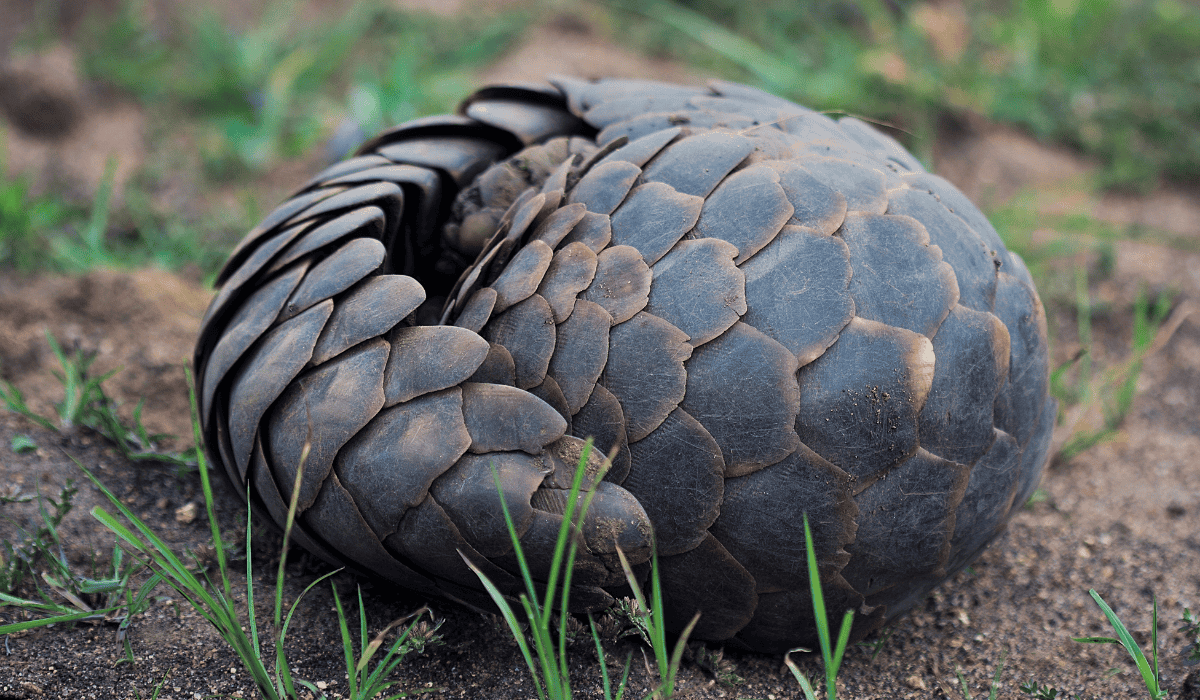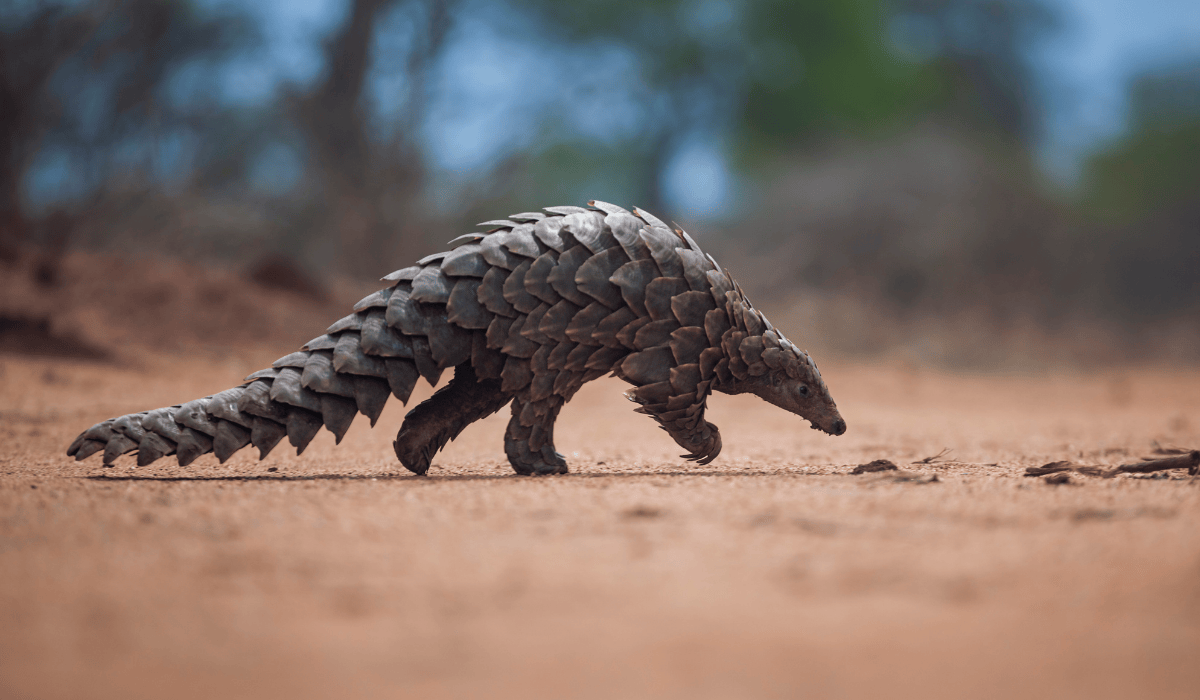
Discover fascinating pangolin facts—from their scale armor to their record-breaking tongues—and learn why pangolins are the world’s most trafficked mammal.
If you’ve never heard of a pangolin, you’re not alone—but you’re missing out on one of the most fascinating (and unfortunately, most exploited) animals on the planet. Pangolins are shy, nocturnal mammals found across parts of Asia and Africa, and despite their tough, scaly appearance, they’re facing a very fragile future.
Let’s break down the most interesting pangolin facts and uncover why this mysterious creature needs protection now more than ever.
What Is a Pangolin?
Pangolins are mammals—yes, mammals with scales—covered from head to tail in overlapping keratin plates, the same material that makes up your fingernails. These scales make up about 20% of their body weight and act like armor, protecting them from predators and, tragically, also making them targets for poaching. Pangolins are the only mammals that have scales covering their entire body, making them especially unique animals.
There are eight species of pangolins: four in Asia (the Sunda pangolin, Indian pangolin, Chinese pangolin, and Philippine pangolin) and four in Africa (the tree pangolin, ground pangolin, giant ground pangolin, and black-bellied pangolin). All eight species are considered either vulnerable, endangered, or critically endangered.
Pangolin Habitat: Where Do Pangolins Live?
Pangolins are found in a variety of habitats—from the savannas of Africa to the tropical forests of Southeast Asia. Some species are arboreal, meaning they live in trees (like the long-tailed pangolin—another name for the black-bellied pangolin), while others, like the ground pangolin, spend their lives foraging on the forest floor.

Pangolin Hands and Tongue: Adaptations Built for Ants
Pangolins don’t have teeth, but they make up for it with their incredibly long, sticky tongues, which can stretch up to 16 inches—longer than their own bodies in some species! This makes them efficient eaters of ants and termites, which make up the bulk of the pangolin diet.
Their strong, clawed hands help them tear open insect mounds. These same hands are also great for climbing or digging burrows.
Pangolin Defense: The Famous Pangolin Ball
When threatened, pangolins curl into a tight pangolin ball, tucking their heads under their tails to protect their soft underbellies. This defense mechanism is incredibly effective against natural pangolin predators like big cats, but tragically ineffective against humans.
Poachers can simply pick up a rolled-up pangolin and carry them away, leading to the horrifying title of “the most trafficked mammal in the world.”

Pangolin Poaching: Why Are Pangolins Endangered?
Pangolins are heavily poached for their scales, which are believed to have medicinal properties in traditional Chinese medicine. Their meat is also considered a delicacy in some cultures, adding to the demand for pangolin meat.
This illegal wildlife trade has driven pangolins to the brink. Experts estimate that over 1 million pangolins have been trafficked in the past decade alone. As of today, we don't know exactly how many pangolins are left in the world, but all species are in decline.
Pangolin Conservation and Rescue
Thankfully, efforts to combat pangolin trafficking are underway. Organizations and sanctuaries across Africa and Asia are working tirelessly to rescue pangolins from the illegal wildlife trade, rehabilitate them, and return them to the wild.
Some pangolins are even fitted with tracking devices to monitor their well-being and gather data on their population and behaviors. Conservationists are also fighting to enforce and strengthen international protections for pangolins, especially through CITES (the Convention on International Trade in Endangered Species).
Pangolins as Pets? Not a Good Idea
Let’s clear this up: pangolins do not make good companion animals. Their diet is extremely specialized, they’re prone to stress in captivity, and they play a critical ecological role in controlling insect populations. Keeping a pangolin as a pet is both unethical and illegal in many countries.
Pangolin Myths: Are They Related to Armadillos or Anteaters?
Pangolins are often nicknamed “armored anteaters” because of their scaly bodies and ant-based diet, but despite appearances, pangolins and anteaters aren’t related. They’re also often confused with armadillos, but pangolins aren’t related to them either! Pangolins belong to their own unique order, Pholidota, while armadillos are part of the Cingulata order, and anteaters are part of the Pilosa.
Similarly, pangolins and anteaters share similar diets and long tongues, but they evolved separately—a phenomenon known as convergent evolution.

Pangolin Babies and Lifespan
Baby pangolins, called “pangopups” (yes, really), are born with soft, pink scales that harden within days. Mothers carry their young on their backs or tails until the babies can fend for themselves.
In the wild, pangolins can live up to 20 years, though most don't reach that age due to poaching and habitat loss.
Are Pangolins Dangerous?
Not to humans! Pangolins are shy, solitary creatures that pose no threat to people. Their claws are used for digging, not fighting, and their first line of defense is always escape or curling up, not aggression.
The Future of Pangolins
The plight of the pangolin is a sobering example of how human demand—for pets, meat, and traditional Chinese medicine—can devastate an entire species.
But there’s hope. Through public education, stronger laws, and global cooperation, we can protect these incredible animals before it’s too late.
Want to Help Pangolins?
- Say NO to wildlife products, especially those made from pangolin scales or meat.
- Support organizations fighting wildlife trafficking and pangolin conservation.
- Educate others about the true story behind these scaly, misunderstood mammals.
World Animal Protection has been working around the world to protect pangolins and other animals from being used as traditional medicine and support a shift to effective, plant-based ingredients. Help us continue protecting pangolins by donating today!